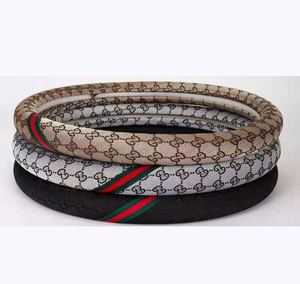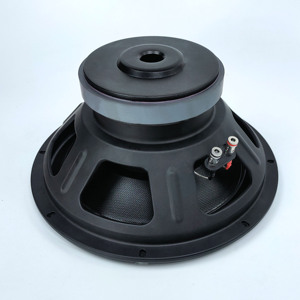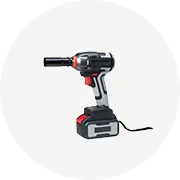Types of Competition Subwoofer Brands
Competition subwoofers are high-performance speakers engineered to produce powerful, deep bass sounds for car audio enthusiasts and competitive sound-offs. These specialized speakers come in various designs, each with unique advantages for different competition scenarios and listening preferences.
Regular Subwoofers
Standard competition models with balanced performance characteristics that serve as the foundation for most car audio systems.
Best for: Everyday use, balanced performance, budget-conscious buyers
Key Benefits: Affordable, reliable, lower power requirements
SQL Subwoofers
SQL (Sound Quality & Loudness) subwoofers deliver exceptional clarity while maintaining impressive volume levels.
Best for: Audiophiles who want both quality and volume
Key Benefits: Versatile across music genres, balanced performance profile
Score Subwoofers
Specifically designed to excel in competitive environments with optimized parameters for maximum points in competitions.
Best for: Dedicated competition participants
Key Benefits: Performance-tuned for competition metrics, maximum efficiency
Dual Voice Coil Subwoofers
Feature two voice coils instead of one, allowing for more flexible wiring configurations and impedance matching.
Best for: System customization, complex installations
Key Benefits: Greater wiring flexibility, enhanced power handling
Bandpass Subwoofers
Utilize dual-chamber design to amplify specific frequency ranges for maximum impact in targeted bass frequencies.
Best for: Bass-heavy music genres, SPL competitions
Key Benefits: Extremely loud in specific frequency ranges, impressive output
Iso Subwoofers
Employ unique suspension systems allowing single-direction cone movement for reduced distortion.
Best for: Sound quality competitions, audiophiles
Key Benefits: Superior sound quality, reduced distortion, accurate bass reproduction
Competition Subwoofer Types Comparison Chart
| Subwoofer Type | Sound Quality | Output Level | Power Needs | Best Application |
|---|---|---|---|---|
| Regular | Good | Moderate | Low-Moderate | Daily listening |
| SQL | Excellent | High | Moderate-High | Balanced competitions |
| Score | Good | Very High | High | Dedicated competitions |
| Dual Voice Coil | Very Good | High | High | Custom installations |
| Bandpass | Moderate | Extremely High | Very High | SPL competitions |
| Iso | Superior | Moderate-High | Moderate | Sound quality competitions |
Expert Tip: When selecting a competition subwoofer type, consider the specific competition category you'll be entering. SPL competitions favor raw output (bandpass designs), while SQ competitions reward accuracy and clarity (ISO and SQL designs).
Specifications and Maintenance of Competition Subwoofer Brands
Key Specifications to Consider
Understanding technical specifications is crucial when evaluating competition subwoofers. Here are the critical parameters that determine performance:
| Specification | Typical Range | Impact on Performance | Example Models |
|---|---|---|---|
| Power Handling (RMS) | 300-3000 watts | Determines continuous power capacity | Rockford Fosgate T1D412 (2400W peak) |
| Frequency Response | 20-200 Hz | Defines bass reproduction range | Sundown Audio SA-12 (24-200 Hz) |
| Impedance | 1-4 ohms | Affects amplifier compatibility | JL Audio 13W7AE-3 (3 ohms) |
| Voice Coil Configuration | Single/Dual | Impacts wiring flexibility | Fi Car Audio BTL (dual 1-ohm coils) |
| Enclosure Requirements | 1.5-3 cubic feet | Determines optimal box design | American Bass VFL (1.5-3 cubic feet) |
Professional Maintenance Guide
Proper maintenance extends the life of your competition subwoofers and ensures consistent performance through competitive seasons. Follow these guidelines for optimal results:
Regular Cleaning
Remove dust and debris from the subwoofer cone, surround, and frame using a soft brush or microfiber cloth.
Frequency: Monthly or after competitions
Warning: Never use liquid cleaners directly on the cone
Connection Maintenance
Inspect and clean terminal connections, ensuring tight, corrosion-free electrical contacts.
Frequency: Every 3 months
Tools needed: Contact cleaner, terminal wrench
Performance Inspection
Check for abnormal sounds, reduced output, or visual damage to components.
Frequency: Before and after competitions
Look for: Cone damage, voice coil rubbing, surround tears
Critical Warning: Never exceed your subwoofer's RMS power rating for extended periods. While competition subwoofers are designed to handle short bursts at peak power, continuous operation beyond RMS ratings will significantly reduce lifespan and may cause catastrophic failure during competition.
Pro Maintenance Tip: After high-intensity competition use, allow your subwoofers to cool down completely before storage. Heat buildup is the primary enemy of voice coil longevity in competition environments.
How to Choose Competition Subwoofer Brands
Selecting the ideal competition subwoofer requires balancing multiple factors based on your specific competition goals, vehicle specifications, and budget constraints. This comprehensive selection guide will help you make an informed decision.
Decision Matrix: Competition Subwoofer Selection Factors
| Selection Factor | Why It Matters | Recommended Specifications |
|---|---|---|
| Power Handling | Determines output potential and headroom | RMS rating at least 20% higher than your amplifier's output |
| Efficiency/Sensitivity | Affects output per watt of power | 88+ dB SPL rating for competition use |
| Build Quality | Impacts durability and performance consistency | Heat-resistant voice coils, reinforced cones, double stitching |
| Enclosure Compatibility | Different subwoofers require specific enclosure types | Match Thiele/Small parameters to your preferred enclosure type |
| Size/Dimensions | Affects bass response and installation options | 8"-18" depending on space and bass preferences |
| Impedance | Must match amplifier capabilities | Lower impedance (1-2Ω) for maximum power transfer |
| Competition Category | Different competitions reward different qualities | SPL: High efficiency, SQL: Balanced performance |
Competition-Specific Selection Guidance
SPL Competition Focus
If your primary goal is achieving maximum sound pressure levels:
- Prioritize subwoofers with very high power handling (1000W+ RMS)
- Look for high sensitivity ratings (90+ dB)
- Consider multiple smaller subwoofers over one large unit
- Optimal for ported enclosures tuned to competition frequencies
SQ Competition Focus
If sound quality accuracy is your competitive edge:
- Choose subwoofers with extended low-frequency response (below 30Hz)
- Look for low distortion specifications
- Consider sealed enclosures for tighter bass response
- Premium materials (like kevlar or carbon fiber cones) offer advantages
Balanced Competition Approach
For competitions that reward both output and quality:
- SQL-focused subwoofers offer the best compromise
- Consider dual voice coil options for wiring flexibility
- Look for adjustable parameters in your amplifier
- Hybrid enclosures (sealed chambers with ports) can offer versatility
Expert Selection Advice: When reviewing subwoofer specifications, pay special attention to the Xmax parameter (maximum linear excursion). Higher Xmax values indicate the subwoofer can move greater distances while maintaining control, which translates to deeper, more accurate bass reproduction in competition environments.
How to DIY and Replace Competition Subwoofer Brands
Properly installing or replacing a competition subwoofer requires attention to detail and technical precision. Follow this step-by-step guide to ensure optimal performance and safety.
Safety Warning: Always disconnect the vehicle's battery before beginning any subwoofer installation or replacement work. This prevents electrical shorts and potential damage to your audio system or vehicle electronics.
Prepare for Removal
Before removing your old subwoofer, document the existing wiring configuration with photos. Measure the dimensions of the current subwoofer and enclosure to ensure compatibility with your replacement unit.
Tools needed: Camera/smartphone, measuring tape, screwdriver set
Remove the Old Subwoofer
Access your subwoofer enclosure by opening the trunk or hatchback. Carefully disconnect all wiring, labeling connections if necessary. Remove mounting screws or bolts, keeping them organized for reinstallation.
Caution: Support the subwoofer while removing final mounting hardware to prevent damage from dropping
Prepare the Enclosure
Inspect the enclosure for any damage, air leaks, or loose components. Use the new subwoofer as a template to mark and drill new mounting holes if necessary. Seal any unused holes with silicone sealant to maintain enclosure integrity.
Pro tip: Use a flashlight inside the enclosure to check for light leaks indicating air gaps
Install the New Subwoofer
Position the new subwoofer in the enclosure, aligning with mounting holes. Secure with appropriate hardware, tightening in a star pattern to ensure even pressure. Connect wiring according to manufacturer specifications, ensuring proper polarity.
Critical: Double-check polarity - reversed connections severely impact performance
Test and Tune
Reconnect the battery and test the system at low volume first. Listen for any unusual sounds or vibrations. Gradually increase volume while checking for distortion. Adjust crossover settings and gain levels to optimize performance.
Break-in procedure: Run new subwoofers at moderate levels for 10-20 hours before pushing to competition levels
Wiring Configurations for Competition Subwoofers
| Subwoofer Type | Recommended Wiring | Benefits |
|---|---|---|
| Single Voice Coil (SVC) | Direct connection to amplifier | Simplicity, reliable performance |
| Dual Voice Coil (DVC) - Series | Connect coils in series for higher impedance | Reduced current draw, amplifier protection |
| Dual Voice Coil (DVC) - Parallel | Connect coils in parallel for lower impedance | Maximum power transfer, higher output |
| Multiple Subwoofer - Series | Connect subwoofers in series | Higher total impedance, amp protection |
| Multiple Subwoofer - Parallel | Connect subwoofers in parallel | Competition-level output, maximum power |
Installation Pro Tip: For competition installations, use premium oxygen-free copper (OFC) wiring that's at least one gauge thicker than the minimum recommended. This reduces resistance, improves power transfer, and minimizes heat buildup during intense competition runs.
Frequently Asked Questions
Competition subwoofers are evaluated based on several performance metrics depending on the competition category:
- SPL (Sound Pressure Level): Measured in decibels using calibrated meters, judges evaluate how loud the system can play
- SQ (Sound Quality): Judges evaluate accuracy, clarity, and overall bass reproduction quality
- Installation: Judges assess the technical quality, creativity, and execution of the subwoofer installation
Competitors often customize enclosures, power delivery systems, and damping materials to maximize their subwoofer's performance in their chosen category.
Competition rules vary by organization but typically include:
- Vehicle Classifications: Based on size, modification level, or number of subwoofers
- Power Restrictions: Some classes limit maximum amplifier output
- Measurement Protocols: Standardized equipment placement and testing procedures
- Safety Requirements: Proper electrical installation, secure mounting, and hearing protection
- Modification Limitations: Restrictions on vehicle structural changes in certain classes
Always check the specific rules for your intended competition organization before designing your system.
The number of subwoofers in a competition setup impacts several performance aspects:
| Configuration | Output Potential | Space Requirements | Power Needs | Tuning Complexity |
|---|---|---|---|---|
| Single Subwoofer | Baseline | Minimal | Lower | Simpler |
| Dual Subwoofers | +3-6 dB over single | Moderate | Double | Moderate |
| Triple Subwoofers | +7-9 dB over single | Substantial | Triple | Complex |
Multiple subwoofer configurations can also provide more even bass distribution throughout the vehicle, which can be advantageous in sound quality competitions.
Breaking in a competition subwoofer is essential for optimal performance and longevity:
- Initial Period (5-10 hours): Play music with moderate bass content at 25-30% volume
- Second Stage (10-15 hours): Gradually increase to 50-60% volume with varied music
- Final Break-in (5-10 hours): Play bass-heavy music at 70-80% of maximum volume
This gradual process allows the suspension components to loosen properly and helps the voice coil to properly seat. Never subject a new subwoofer to competition-level stress until properly broken in.
Yes, competition subwoofers can be used for everyday listening, but there are important considerations:
Advantages
- Superior power handling provides excellent headroom
- Higher quality components often produce better sound
- Greater durability for long-term use
Challenges
- May require more power than standard car audio systems provide
- Can be tuned too aggressively for casual listening
- May sacrifice cargo space for optimal enclosure design
For everyday use, consider running competition subwoofers at reduced power levels and with more conservative equalizer settings to enhance musicality while preserving the equipment.















































































































































































































































 浙公网安备 33010002000092号
浙公网安备 33010002000092号 浙B2-20120091-4
浙B2-20120091-4